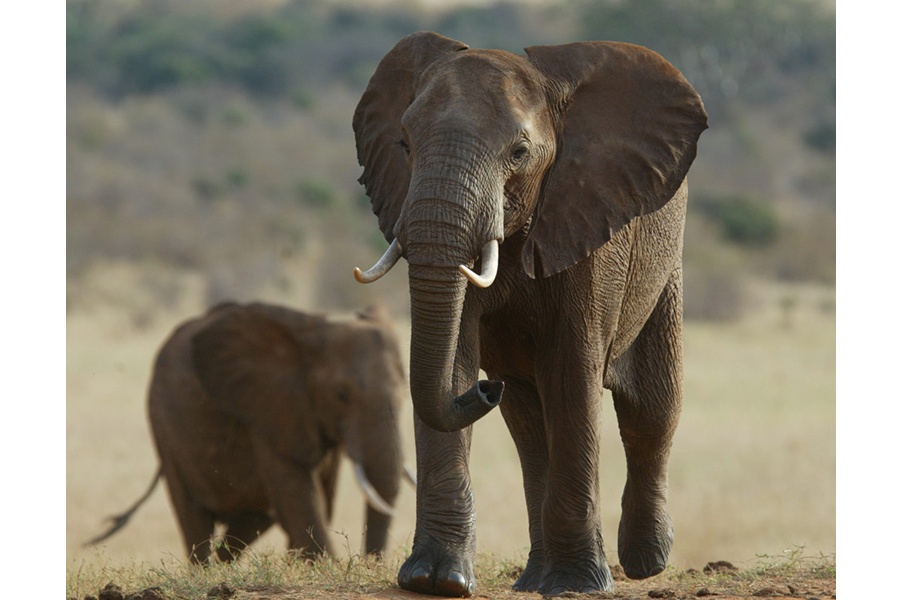What carbon dating tells us about elephant poaching. (It's not good.)
Loading...
Despite increased awareness and activism seeking to protect wildlife, most illegal ivory likely comes from elephants that were killed by poachers in recent years, a new study has found.
Published Monday in the Proceedings of the National Academy of Sciences, the study found that poaching still poses a severe threat to elephants, whose numbers continue to decline. While ivory bans in the US and Europe and a widespread push to protect endangered species have helped to curtail its distribution there, ivory remains popular and profitable in Southeast Asia, which has seen an economic boost that has ushered in a competitive market.
“There’s been a staggering rate of elephant loss every year,” Thure Cerling, a geochemist at the University of Utah and lead author of the study, told The Los Angeles Times. “Some people were saying, well, we don’t need to worry so much because there’s big stockpiles of ivory, so we’re getting legacy ivory into the market ... and other people were saying, no, no, no, these are all recent deaths.”
To answer the question of where the ivory flooding the market has come from, researchers used carbon dating to analyze more than 200 ivory samples confiscated between 2002 and 2014. By isolating carbon-14 in the pulp cavity of the ivory, experts can compare the amount of the isotope found to the carbon’s abundance at a certain time, and determine how long ago an elephant died.
When the US and Russia engaged in a barrage of nuclear testing during the 1950s and 1960s, they almost doubled the amount of carbon-14 globally. As that rate has declined in the years since, scientists can map the rate and compare what they find in the ivory to pinpoint when it stopped growing.
That process revealed that 90 percent of ivory came from animals who had died within three years before authorities recovered the ivory from illegal caches. Authorities had raised concerns that ivory entering the market may have come from older government stockpiles after officials gave them to sellers illegally, but as this research shows that most market ivory is new, there’s a reassurance that those hordes are secured.
Today, some 95 elephants are still killed daily for their valuable tusks, which can earn more than $200,000 in some markets. The study found that the time period between an elephant’s death and the seizure of ivory has increased from around eight to 10 months to between two and three years, but researchers say that shift likely comes from a dwindling number of wild elephants, making it harder for poachers to find and kill the animals and obtain enough ivory to fill a shipment.
Saving elephants will depend on shifting focus and enforcement to newly seized ivory, using genetics to trace its origin, and cracking down on the highly organized groups that perpetrate these crimes, researchers say.
Another part of the solution is pushing those who purchase ivory in Southeast Asia to adopt new attitudes about poaching and ivory through education and strict enforcement of laws.
“This shows how serious the problem is, and how we need to continue to attack this problem from many different angles: enforcement, forensics, education,” Kevin Uno, a geochemist at Columbia University who also worked on the study, told The Verge. “The elephants are really in trouble.”








